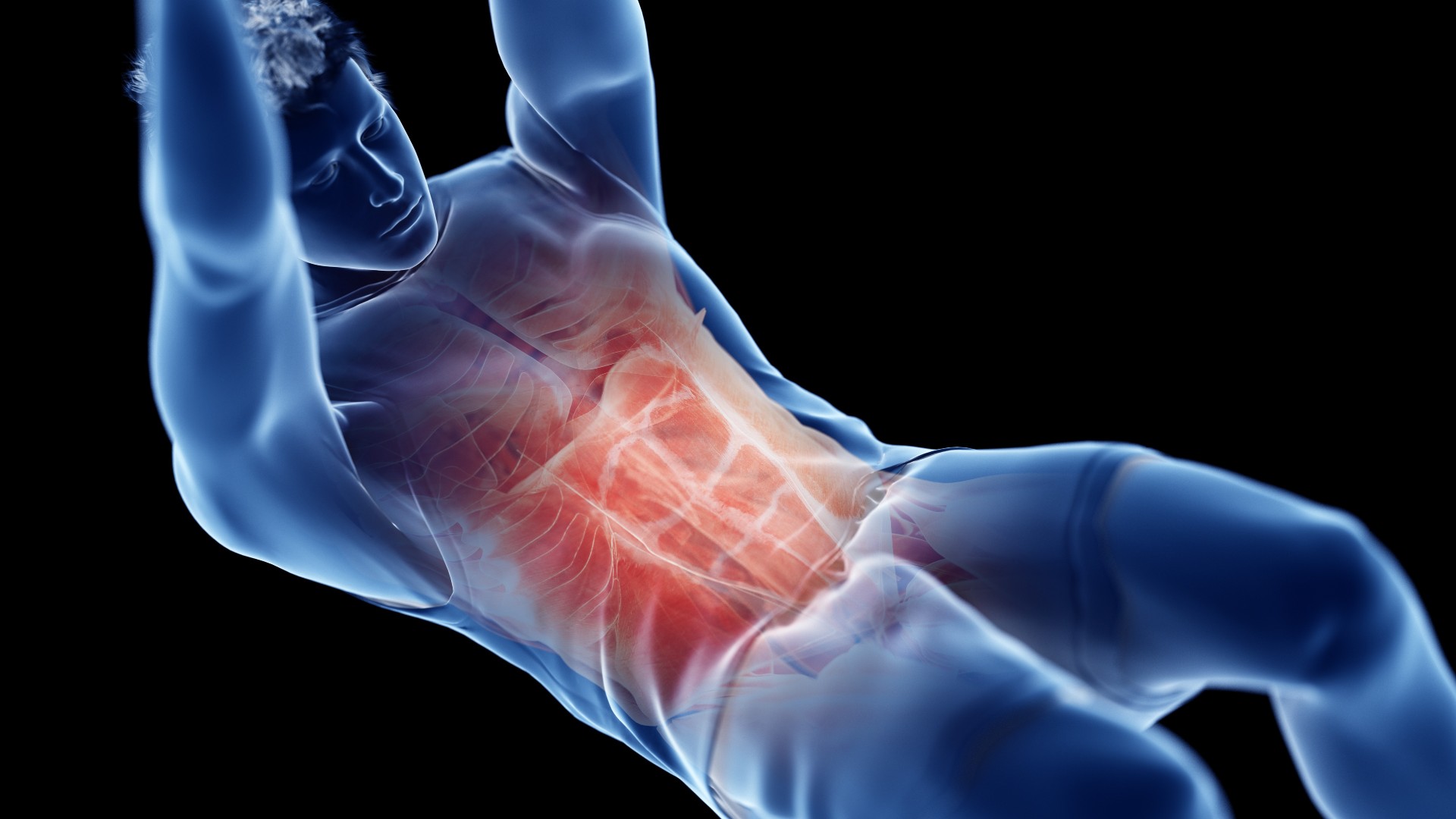
Forget planks or sit-ups, the Pallof press nicks it as one of the best ab exercises to develop core strength, and you don’t need a fancy cable machine to do it either. I did 50 resistance band Pallof presses every day for a week — here's what happened to my core.
If you're unfamiliar with the Pallof press, the lesser-known ab exercise can be found in home workouts and gym programs and could build a seriously strong set of abs and powerful core stability. If you're currently typing the name into Google, I was also a late adopter. But always on the hunt for a new fitness challenge, I decided to try it for a week.
It might sound exotic, but the move simply involves standing with an anchor point to your side and a band or cable held taut in front of you, pressing it out for five to 10 seconds, then back to your chest. It’s called an isometric exercise because your muscles are under contraction without any extension or flexion taking place.
Easy right? Nope, as I was about to find out. If you love to work your abdominal muscles, I love this Pilates ab workout, and this lower abs workout will torch your core.
What is the Pallof press?
“Pallof press” was coined by the physical therapist John Pallof. It’s an anti-rotation exercise that challenges your entire core to resist movement and maintain stability under load. Also considered a functional exercise, the move activates multiple muscle groups like your glutes, helps prevent injury, and improves overall movement quality and posture.
We love a functional workout —- this calisthenics workout is perfect for beginners and advanced gym bunnies alike if you need a new year challenge — and the more muscles involved, the better. By training your core to resist rotation, your body can perform twisting movements better and with less chance of injury, which is ideal if you play sports.
Pallof press: muscles worked

Expect to work your rectus abdominis muscles located at the front of your torso and responsible for the sought-after rippling six-pack. Your obliques (the muscles along the sides of your waist), erector spinae (spine stabilizers), transverse abdominis (a deep belt of muscle between the ribs and pelvis), and gluteal muscles that stabilize your pelvis will also work hard throughout.
Sign up to get the BEST of Tom's Guide direct to your inbox.
Get instant access to breaking news, the hottest reviews, great deals and helpful tips.
How to do a Pallof press
I used one of the best resistance bands to perform the Pallof press, but you can use a cable machine in the gym. If you suffer from a lower back injury, check in with a qualified medical professional before performing this exercise and seek the advice of a personal trainer if your form is compromised. Check out the video below for tips on form and aim to keep your core engaged while resisting any rotation through your torso.
I did 50 Pallof presses every day for a week — here’s why
Here’s what the Pallof press did to my core after one week.
1. I learned to embrace the shake
I performed five sets of 10 reps, completing five reps on each side using a medium-heavy resistance band and a 10-second hold for each rep. I hadn’t done these in a while, and I was shocked at how quickly my core started to quiver.
I focused on squeezing my upper body and glutes to stabilize my trunk against the force of the band, and I had to work hard to keep my hips and torso square without turning toward the anchor point. By the second set, my abdominal muscles were on fire, and I could feel my entire core working hard, with particular attention to my outer glutes and waist.
During an isometric contraction, it’s normal to experience shaking as your body generates force to hold its position. This knowledge didn’t make it more tolerable, but it reminded me to breathe. If you’re new to isometric exercises, you can do this 10-minute core workout while barely moving to swat up fast.
2. I began to improve posture
The obliques work hard during the Pallof press, and I could feel my sides duly switched on throughout. The external obliques are superficial muscles that sit between the ribs and pelvis along the sides of your body, and your internal obliques sit underneath them. Together they work to help flex, stabilize and rotate your trunk and help you bend side-to-side.
Plenty of research — like this study by PLOS — has shown that your oblique muscles are crucial for good posture and improving movement quality. Although strengthening these muscles usually involves twisting moves, the Pallof press is one of the best ways to build strength in these muscles while barely moving. I could feel my posture being tested with every rep to maintain my holding position. It was killer, but it drew my attention to my breath and positioning, and I felt taller afterward.
3. It took a while
One of my previous fitness challenges began to feel meditative — like when I did 50 Arnold presses every day for a week — and I wondered if I could replicate it. Unlikely, it turned out. Although I gave up hope on finding my zen while visibility shaking, I did see improvements in my breathing.
Research has shown that breathing during weight lifting or holding a heavy load can help relieve stress and pressure on the spine, improve stability, and prevent a spike in blood pressure. I focused on intra-abdominal breathing or “belly breathing,” which encourages you to breathe into your diaphragm rather than your chest. I found this surprisingly calming and noticed it easier to control my movement, breath, and posture this way.
However, it took a while, and I started to get slightly bored. Pallof obviously had the patience of a Saint or maybe he skipped out on fewer reps? Either way, this exercise isn't one to rush, so if you plan to try it, make sure you've got time to dedicate and don't rush.
Next up: I did ab wheel rollouts every day for a week, here’s what happened and these are the best ab workouts. Also, check out this 13-move ab workout that builds a strong core in 15 minutes.

Sam Hopes is a level 3 qualified trainer, level 2 reiki practitioner and senior fitness writer at Tom's Guide. She is also currently undertaking her Yoga For Athletes training course. Sam has written for various fitness brands and websites over the years and has experience across brands at Future such as Live Science, Fit&Well, Coach, and T3.
Having worked with fitness studios like F45 and Virgin Active, Sam now primarily teaches outdoor bootcamps, bodyweight, calisthenics and kettlebells. She also coaches mobility and stretching-focused classes several times a week and believes that true strength comes from a holistic approach to training your body.
Sam has completed two mixed doubles Hyrox competitions in London and the Netherlands and finished her first doubles attempt in 1:11.

